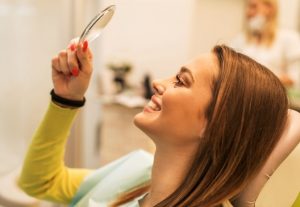Fake Gums For Receding Gums
What are Fake Gums?
Fake gums, also known as gum prostheses, are artificial gums that are designed to replace lost gum tissue. They are typically made of silicone or acrylic resin and are custom-made to fit the patient’s mouth. There are two types of fake gums: removable and fixed. Removable fake gums are like dentures and can be taken out of the mouth for cleaning. Fixed fake gums, on the other hand, are permanently attached to the teeth using dental implants.
Effectiveness of Fake Gums
While fake gums may be a viable option for some people, they are not suitable for everyone. The effectiveness of fake gums depends on several factors, including the severity of the gum recession, the patient’s oral health, and their overall health. Some of the pros and cons of using fake gums include:
Pros
- It can improve the appearance of the teeth and gums.
- It can reduce tooth sensitivity and pain.
- Can prevent further gum recession and tooth loss
Cons
- It can be uncomfortable to wear
- It can cause irritation and inflammation of the gums.
- It can be not easy to clean and maintain
Compared to other treatment options, such as gum grafting and, scaling and root planing, fake gums have a lower success rate. According to a study published in the Journal of Clinical Periodontology, the success rate of fake gums is around 50%.
How to Use Fake Gums
Using fake gums requires proper care and maintenance to ensure their longevity. Here are some tips for using fake gums:
- Brush and floss regularly to prevent the buildup of plaque and bacteria
- Avoid hard and sticky foods that can damage the fake gums.
- Rinse your mouth with an antiseptic mouthwash to prevent infection.
- Visit your dentist regularly for checkups and adjustments.
Traditional Gum Grafting
In the past, the most common treatment for receding gums was traditional gum grafting, a surgical procedure in which a piece of healthy gum tissue from one area of the mouth is transplanted into the receding area. While effective, this procedure involves surgery, sutures, and a more extended recovery time. It can be a bit painful.
The Rise of Fake Gums
Over the years, the dental industry has introduced alternatives to traditional gum grafting, sometimes referred to as “fake gums.” These alternatives are non-surgical or minimally invasive and aim to stimulate gum tissue growth, thereby reducing the appearance of receding gums. Let’s explore some of the typical fake gum solutions:
- Gum Regeneration Products: These include over-the-counter or prescription products like gels, toothpaste, and mouthwash designed to stimulate gum tissue growth and strengthen existing gum tissue.
- Dental Appliances: Some dental appliances, like soft, silicone-like devices, are marketed as “fake gums.” They can be worn over your natural gums to provide a protective and cushioning barrier, potentially reducing further gum recession.
- Cosmetic Procedures: Some cosmetic dentistry procedures, like dental bonding and veneers, can effectively mask receding gums by creating an illusion of fuller gum tissue and a more uniform gum line.
Benefits of Fake Gums
- Non-surgical: Fake gum solutions are generally non-invasive or minimally invasive, making them less painful and requiring less recovery time than traditional gum grafting.
- Improved Aesthetics: Many fake gum products can significantly enhance the appearance of your smile, providing a more symmetrical and youthful gumline.
- Cost-Effective: These alternatives are often more budget-friendly than surgical options, making them accessible to a broader range of patients.
Potential Risks and Considerations
While fake gums may seem like a convenient solution, it’s essential to consider some potential risks and limitations:
- Efficacy: The effectiveness of fake gums may vary from person to person, and not all products or procedures may yield the desired results.
- Short-term Solutions: Some fake gum solutions may provide a temporary fix but not a long-lasting resolution to receding gums.
- Underlying Issues: Fake gums might mask the problem without addressing the root cause, which could be gum disease or other oral health issues.
- Consultation with a Professional: It’s crucial to consult with a dental professional to determine the severity of your receding gums and identify the best treatment approach.
Conclusion
While fake gums may be a viable option for some people, it is essential to consult with a dental professional before using them. They can guide the best treatment options for your specific needs and help you make an informed decision.



